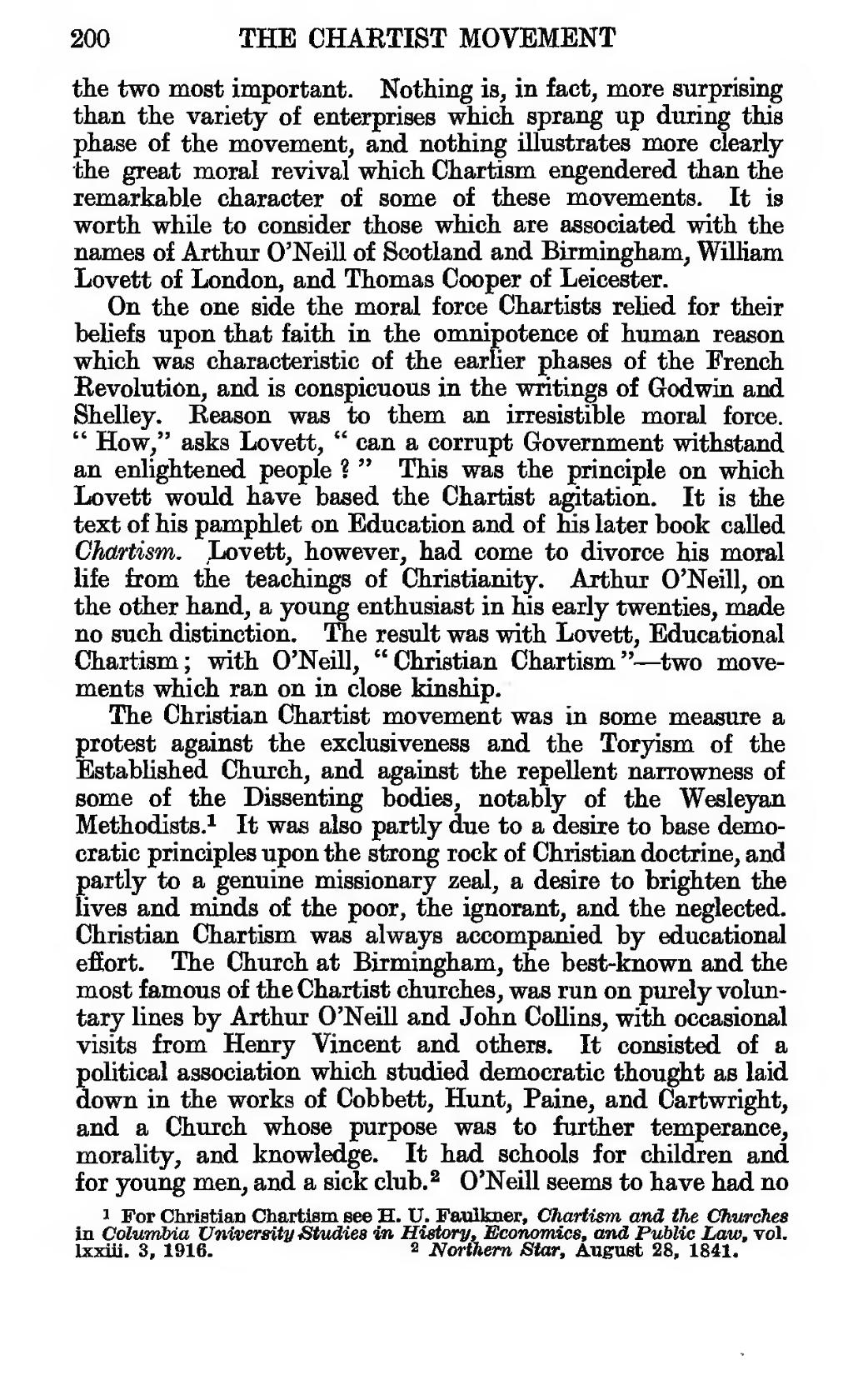the two most important. Nothing is, in fact, more surprising than the variety of enterprises which sprang up during this phase of the movement, and nothing illustrates more clearly the great moral revival which Chartism engendered than the remarkable character of some of these movements. It is worth while to consider those which are associated with the names of Arthur O'Neill of Scotland and Birmingham, William Lovett of London, and Thomas Cooper of Leicester.
On the one side the moral force Chartists relied for their beliefs upon that faith in the omnipotence of human reason which was characteristic of the earlier phases of the French Revolution, and is conspicuous in the writings of Godwin and Shelley. Reason was to them an irresistible moral force. "How," asks Lovett, "can a corrupt Government withstand an enlightened people?" This was the principle on which Lovett would have based the Chartist agitation. It is the text of his pamphlet on Education and of his later book called Chartism. Lovett, however, had come to divorce his moral life from the teachings of Christianity. Arthur O'Neill, on the other hand, a young enthusiast in his early twenties, made no such distinction. The result was with Lovett, Educational Chartism; with O'Neill, "Christian Chartism"—two movements which ran on in close kinship.
The Christian Chartist movement was in some measure a protest against the exclusiveness and the Toryism of the Established Church, and against the repellent narrowness of some of the Dissenting bodies, notably of the Wesleyan Methodists.[1] It was also partly due to a desire to base democratic principles upon the strong rock of Christian doctrine, and partly to a genuine missionary zeal, a desire to brighten the lives and minds of the poor, the ignorant, and the neglected. Christian Chartism was always accompanied by educational effort. The Church at Birmingham, the best-known and the most famous of the Chartist churches, was run on purely voluntary lines by Arthur O'Neill and John Collins, with occasional visits from Henry Vincent and others. It consisted of a political association which studied democratic thought as laid down in the works of Cobbett, Hunt, Paine, and Cartwright, and a Church whose purpose was to further temperance, morality, and knowledge. It had schools for children and for young men, and a sick club.[2] O'Neill seems to have had no
- ↑ For Christian Chartism see H. U. Faulkner, Chartism and the Churches in Columbia University Studies in History, Economics, and Public Law, vol. lxxiii. 3, 1916.
- ↑ Northern Star, August 28, 1841.
